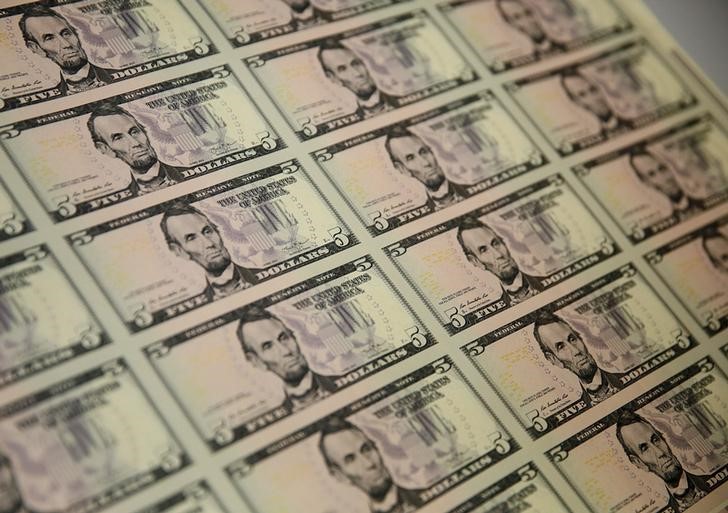Investing.com - The dollar was broadly lower against a basket of other major currencies on Tuesday, as markets were jittery ahead of private sector data on U.S. consumer confidence due later in the day as well as the Federal Reserve's monthly policy statement expected on Wednesday.
Traders were looking ahead to the S&P/Case Shiller housing index and a report on U.S. consumer confidence later in the day for further indications on the strength of the recovery, ahead of Wednesday’s Federal Reserve policy announcement.
Recent disappointing data on employment, home sales and industrial production have prompted investors to scale back expectations on the timing of a first rate hike by the U.S. central bank, sending the dollar lower.
The U.S. dollar index, which measures the greenback’s strength against a trade-weighted basket of six major currencies, was down 0.27% to 96.63.
EUR/USD rose 0.34% to 1.0927.
The euro found support after Greek Prime Minister Alexis Tsipras reshuffled the team handling talks with the country’s international lenders, fuelling optimism that a deal will be reached by early May.
The pound was also higher, with GBP/USD up 0.30% to 1.5282, off lows of 1.5177 hit earlier in the session.
Sterling came under pressure after the Office of National Statistics said the U.K. gross domestic product expanded 0.3% in the three months to March, slowing from 0.6% in the final quarter of 2014. It was the slowest rate of growth since the fourth quarter of 2012.
The consensus forecast among economists was for a more moderate slowdown to 0.5%.
On a year-over-year basis the U.K. economy grew 2.4%, below expectations for 2.6% after growth of 3.0% in the last three months of 2014.
Investors were also looking ahead to the outcome of the upcoming U.K. general elections on May 7, which could result in a hung parliament and an unstable coalition government, which could act as a drag on growth.
Elsewhere, the dollar was steady against the yen, with USD/JPY at 118.98 and higher against the Swiss franc, with USD/CHF gaining 0.39% to 0.9585.
The Australian and New Zealand dollars were stronger, with AUD/USD advancing 0.87% to one-month highs of 0.7926 and NZD/USD climbing 0.50% to 0.7685.
Meanwhile, USD/CAD slipped 0.15% to trade at 1.2068.
